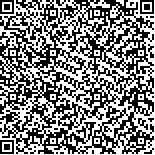| 引用本文: | 彭彬森,夏虹,王志超,朱少民,杨波,张汲宇.深度神经网络在滚动轴承故障诊断中的应用[J].哈尔滨工业大学学报,2021,53(6):155.DOI:10.11918/201909062 |
| PENG Binsen,XIA Hong,WANG Zhichao,ZHU Shaomin,YANG Bo,ZHANG Jiyu.Rolling bearing fault diagnosisusing deep neural network[J].Journal of Harbin Institute of Technology,2021,53(6):155.DOI:10.11918/201909062 |
|
| 摘要: |
| 为了对滚动轴承发生的故障类型进行诊断,从而提升设备的安全性,提出了一种基于深度残差神经网络的智能故障诊断方法,并使用多传感器融合技术对深度残差神经网络进行了改进,使得诊断模型的识别精度和鲁棒性得到进一步提高.首先,通过多传感器技术来获取丰富的设备运行状态信息,然后利用时频分析方法短时傅里叶变换提取原始振动信号的初级特征信息,最后利用深度残差网络的强大学习能力,进一步提取初级特征信息中的高级特征信息,并识别设备的故障类型,从而实现滚动轴承的故障诊断.为了验证所提出方法的有效性,使用滚动轴承实验数据对方法进行了测试,同时与基于深度卷积神经网络和单传感器故障诊断模型进行对比,研究结果表明,提出的智能方法不仅能对故障进行准确识别,而且具有相当良好的泛化能力和抗噪能力,其故障精度达到了100%,在单传感器或多传感器受到强噪声干扰时,分别实现诊断精度至少为93.78%和82.54%. |
| 关键词: 滚动轴承 故障诊断 多传感器技术 深度残差神经网络(DRNN) 短时傅里叶变换(STFT) |
| DOI:10.11918/201909062 |
| 分类号:TH17 |
| 文献标识码:A |
| 基金项目:黑龙江省自然科学基金(E2017023) |
|
| Rolling bearing fault diagnosisusing deep neural network |
|
PENG Binsen,XIA Hong,WANG Zhichao,ZHU Shaomin,YANG Bo,ZHANG Jiyu
|
|
(Fundamental Science on Nuclear Safety and Simulation Technology Laboratory (Harbin Engineering University), Harbin 150001, China)
|
| Abstract: |
| To diagnose the fault types of rolling bearings, thereby improving the safety of the equipment, an intelligent fault diagnosis method based on deep residual neural network was proposed. The multi-sensor fusion technology was used to improve the deep residual neural network, so that the recognition accuracy and robustness of the diagnosis model could be further improved. Firstly, through multi-sensor technology, the rich information of the equipment operating state was obtained, and then the primary features of the original vibration signal were extracted by short-time Fourier transform. Finally, the powerful learning ability of the deep residual network was used to further extract the advanced features from the primary features and identify the types of faults, thus achieving the rolling bearing fault diagnosis. The experimental data of rolling bearing were used to verify the effectiveness of the proposed method, and deep convolution neural network-based method and single sensor-based method were taken as contrast methods to test the same dataset. Results show that the proposed method could not only accurately identify faults, but also had good generalization ability and anti-noise ability. The fault diagnosis accuracy reached 100%, and when single or multiple sensors were affected by strong noise, the diagnostic accuracy was at least 93.78% and 82.54% respectively. |
| Key words: rolling bearing fault diagnosis multi-sensor technology deep residual neural network(DRNN) short-time fourier transform(STFT) |







